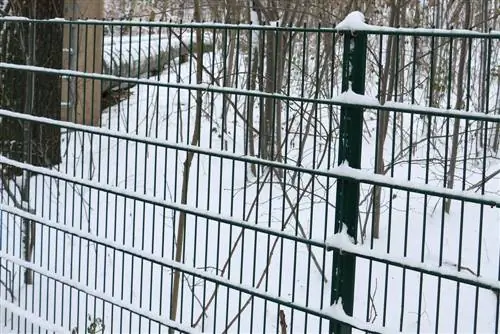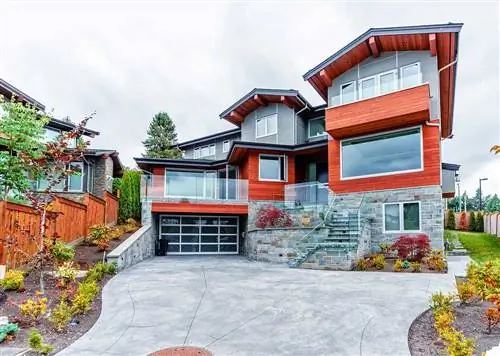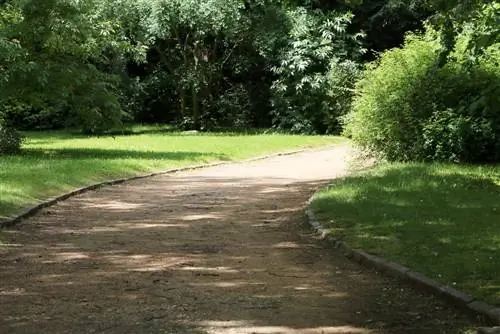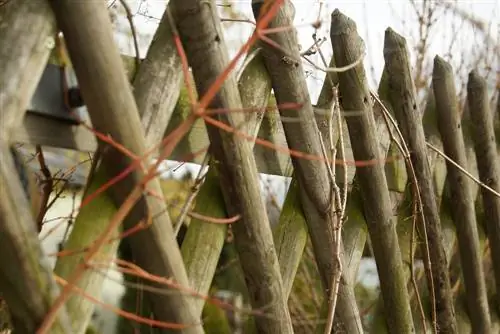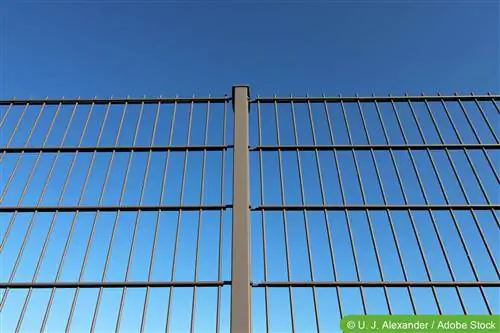- Author admin [email protected].
- Public 2023-12-17 03:39.
- Last modified 2025-01-24 12:45.
A wire mesh fence consists of a mesh of horizontal and vertical steel wires. They are spot welded together at their intersection points. The bar mesh fence now combines numerous requirements that are placed on a fence.
Maximum flexibility with the wire mesh fence
A bar fence is
- very stable
- weatherproof
- light open
- easy to set up
- Flexible and dynamic
The wire mesh fence is the more stable, more aesthetic and more robust development of the chain link fence. It is much harder to overcome. With a chain link fence, all you need to do is cut a wire in two places to create an opening in the fence. In addition, the wires of the chain link fence are so thin and soft that a small pair of tin snips is enough to penetrate them. However, a wire mesh fence has much thicker and stiffer wire elements. It cannot be rolled up like a chain link fence. However, because it is extremely thin, its elements can be stacked very well. The bar mesh fence is hardly inferior to the chain link fence in terms of its stowability and transportability.
The wire mesh fence is so stable that it offers effective protection against intruding foreign bodies. Depending on the version, vehicles can even be held back. In any case, this type of fence creates an effective barrier against unwanted intruders. The elements of a bar mesh fence are available at high heights of over two meters. Thanks to its lightweight construction, several elements can be easily mounted on top of each other.
Corrosion protection for wire mesh fences
Rod fences offer highly effective corrosion protection as standard. This is achieved by
- High quality core material
- Galvanic coating
- Complete coating with plastic powder
- Painting with impact-resistant and weather-resistant paint
Rod fences are manufactured and delivered “rigid”. This makes them much more flexible in terms of their core material than the soft chain link fences can be. The nobler a type of steel is, the more rigid it is. Wire mesh fences made of stainless steel are very rare and very expensive. But even normal fences of this type offer significantly higher resistance to corrosion than the metal wires in chain link fences can.
Hot-dip galvanizing
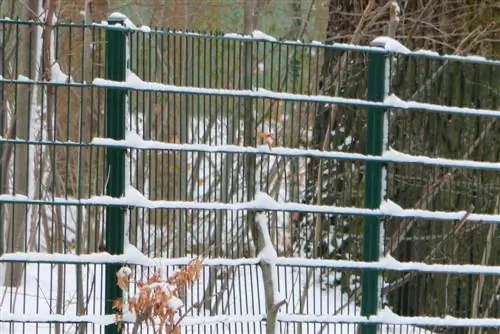
Rod fences are hot-dip galvanized as standard. Zinc is a metal that plays a major role in corrosion protection. It completely envelops a steel body. Since it does not rust itself, it protects the internal steel body from corrosion. A galvanized surface has a silvery, shimmering matt shine. However, the zinc offers a good surface for any type of further coating. Due to the ease of processing, powder coating or dip painting is very popular for the color design of wire mesh fences. Today, ungalvanized wire mesh fences can actually only be obtained from the Far East. They are very inexpensive, but only last a few years.
Powder coating
Powder coating is a supplement or alternative to galvanizing on a wire mesh fence. You can usually tell the difference in the price: wire mesh fences that are not galvanized and “only” powder coated are usually very inexpensive. Fences that only use dip-coating are even cheaper. However, these non-galvanized products are only available from German manufacturers upon express request. The combination of galvanizing and powder coating is standard today. It also offers the best protection against corrosion.
Dip painting
The advantage of dip painting over powder coating is that it can offer a wider range of colors. The color powders are available in all RAL colors. To date, it is very difficult to create an individual mixture when it comes to powder coating. Here the use of impact-resistant rust protection paint is much more flexible.
Light, air and safety in the bar fence
A wire mesh fence is as open to light as a chain link fence. The view inside or outside is almost not disturbed. This type of fence is therefore much friendlier and more inviting than wooden fences. Nevertheless, its stable structure is very suitable for being braced with suitable textiles. This makes the wire mesh fence as opaque as you want it to be. Surprisingly, the wire mesh fence still offers sufficient protection against burglars.
This is achieved through the following properties:
- Any fence heights
- Any expandability
- Resistant materials
- Protected connections
The bar mesh fence can be set up at any height. All you need are appropriately long vertical posts. The elements are so light and easy to process that they can be mounted on top of each other as often as you like. With simple extensions to the posts, protection against burglars can be further increased: A frequently used measure is the use of beveled tips on the vertical posts. Barbed wire is then stretched across these tips, creating another hurdle against unwanted intrusion.
A wire mesh fence offers a high level of resistance against break-in attempts. With the appropriate tools, the delicate mesh made of steel wires can be easily processed. This makes it particularly suitable for individual adjustments. For burglars, however, this means two undesirable side effects:
- high noise level
- high expenditure of time
Cut-off machines as a useful tool
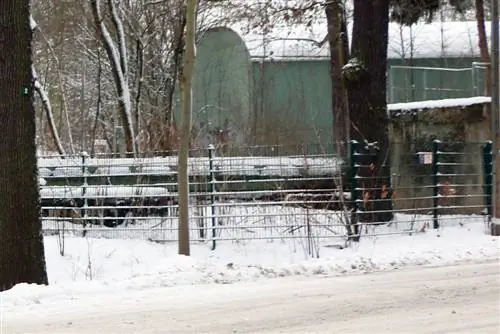
The only tool to “crack” a wire mesh fence in a short time is the cut-off machine. These are now also available as battery-powered devices. However, the use of these devices is not only very loud. The far-radiating sparks also don't make it particularly popular with burglars.
However, the cut-off machine offers the user some advantages for processing his wire mesh fence:
- A cut-off machine can shorten a fence element to any width or height.
- It is also possible to create larger openings.
- However, it is advisable to always cut flush with the horizontal wires running across.
- This avoids pointed and sharp protrusions.
- For this reason, the cut-off machine is more suitable for working on a bar fence than wire cutters.
- The wire cutters cannot make a flush cut but will always leave a small residue.
- In addition to cutting, a wire mesh fence can also be easily bent or edged. This makes very individual fencing solutions possible.
Of all the types of fences, the wire mesh fence is certainly one of the easiest types to set up. A set consists of standardized and suitably assembled elements. These elements are the actual surface element and the vertical post. Simple screw connections are sufficient to attach the fence elements. However, something that is easy to assemble can usually also be dismantled just as easily. The fence manufacturers offer various solutions to secure the mounting points against burglars. These are:
- Riveted protective caps
- Secured screws
- Welded connections
The mounting points for the bar fences are usually on the inside of the property. Protective caps are available as standard for most products. These are often riveted. In order to access the actual screw connection, a drill must be used. But this is not possible from the outside of the fence.
Screw locks, for example Loctite, provide a minimum level of protection. This high-strength adhesive makes the screw connections very strong. They can then no longer be removed with simple cordless screwdrivers or small wrenches - especially not from the outside of the fence.
Tip:
The maximum burglary resistance is achieved when the connecting screws are welded. The visible welding points are also a good psychological deterrent: If burglars see the welding points, then they know that the element cannot be removed without spending a considerable amount of time.
Construction of a bar fence
The actual work involved in building a bar fence can hardly be seen in the result. A wire mesh fence actually depends on the quality of the foundations of its vertical posts. If these point foundations are carried out correctly, the actual fence can be built in just a few minutes. Therefore, the foundation of this type of fence should be given the greatest attention.
With a chain link fence or hunter's fence, the fence area is attached in front of the vertical posts. This makes their position relatively uncritical. However, a wire mesh fence is delivered in surface elements that have a defined and consistent size. They are mounted abutting the vertical posts. These must therefore be set up at exactly the right distance.
Concrete is recommended for creating point foundations for lattice fences. Buried hollow blocks cannot provide the long-term stability that is necessary for building a wire mesh fence. For low fences that do not require much protection from intruding foreign bodies, ready-made, large-format KSV stones can be used if necessary. However, compared to a properly manufactured point foundation, this is only a compromise solution.
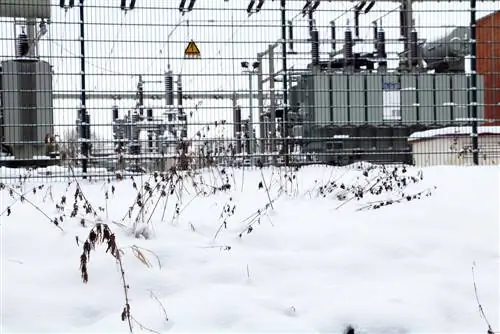
You need this tool to build a bar fence:
- Mortar tub
- Powerful drill with stirrer
- Angle spirit level
- Length spirit level
- Spade and Shovel
- string
- Inch rule
- Mason's Trowel
These materials are required as aids:
- Roof battens
- Cable ties
- gravel
- Precast concrete
- Water
- Wooden blocks with a diameter of 10 cm
1. The measurement
When the fence type is selected, the distances between the posts are known. These specify the positions of the point foundations. In order to ensure that the flight is as straight as possible, it is recommended to set up a batter board. The distance between the posts is marked by the fence elements placed next to them. You can't measure yourself like that.
2. Excavating the point foundations
The point foundations are dug to match the position of the posts. From a lawn, a square piece is first removed with the help of a spade and placed aside. This will be relocated later. This creates a particularly beautiful finish between the meadow and the fence. The foundation is then excavated using a spade and shovel. An opening as wide as a spade is sufficient. However, it must be dug 80 cm deep to be frost-proof. A layer of gravel is laid at the bottom of the foundation. This layer should be approx. 10 cm thick. The gravel layer ensures that water running through the post does not accumulate and can instead flow away. Two foundations must be dug for the first fence element. After the foundations have been dug, the first fence element is installed.
3. Preparing the first fence element
By pre-assembling the first fence element, you can no longer move the posts in the longitudinal direction of the fence. This makes alignment much easier. For most manufacturers, the connecting elements are located in the Q-pipe of the fence. To do this, simply remove the bottom cover cap and the connecting screws will fall out. The cover cap remains removed! The pipe must be placed on the gravel bed, open at the bottom. Otherwise, water can build up in the pipe again and cause it to rust from the inside out.
The pre-assembled fence element is placed in the foundations. The fence should have a distance of 10cm from the ground. The wooden blocks are ideal for this. The element is simply placed on the blocks to ensure the correct distance. With the help of the slats and cable ties, the fence can be perfectly straightened. Two support slats on each side of the fence element ensure the necessary stability during concreting.
4. Concreting
The concrete is mixed in the mortar tray. The concrete should have a slightly grainy consistency. During filling, the concrete is repeatedly tamped firmly with the help of a piece of roof batten. This gives the fully hardened concrete its maximum stability and frost protection. The fewer pores remain in the concrete, the fewer nests there are for water to penetrate. This effectively prevents the concrete from splitting open the next time there is frost. The concrete is poured so high that the piece of lawn can be laid back and grow. The surface of the foundation is smoothed out with a trowel. The process is repeated until the entire fence is set. The concrete is completely hardened after one day. The supports are removed and the wire mesh fence is finished.
Tips for more flexibility
The fence posts set directly in the concrete are quite easy to assemble. However, this process has a definite disadvantage: If the wire mesh fence is to be replaced, the foundation must also be removed. This is not just a tedious duplication of work. Disposing of the heavy point foundations is also a challenge.
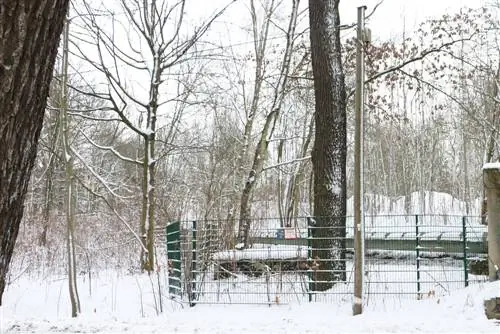
With a little forward planning, this double work can be avoided: Instead of sticking the elements directly into the concrete, a guide tube is concreted in. This has an inside diameter that corresponds to the outside diameter of the fence post. If the wire mesh fence needs to be replaced, it can simply be pulled out of the guide tube. The foundation remains in the ground and is used again for the next fence.
Costs for a bar fence
The prices for bar fences are quite similar across manufacturers. Above all, it depends on the design: the more stable and weather-resistant a wire mesh fence is, the more expensive it will be. For a ten meter long fence you have to expect the following costs:
Standard version, consisting of four galvanized elements and five posts
- Height approx. 60 cm: 390 euros
- Height approx. 85 cm: 450 euros
- Height approx. 105 cm: 490Euro
- Height approx. 125 cm: 530 euros
- Height approx. 145 cm: 590 euros
- Height approx. 165 cm: 650 euros
- Height approx. 185 cm: 710 euros
- Height approx. 205 cm: 770 euros
Robust variant with increased intrusion protection, consisting of four galvanized elements and five posts
- Height approx. 60 cm: 450 euros
- Height approx. 85 cm: 500 euros
- Height approx. 105 cm: 550 euros
- Height approx. 125 cm: 600 euros
- Height approx. 145 cm: 670 euros
- Height approx. 165 cm: 750 euros
- Height approx. 185 cm: 815 euros
- Height approx. 205 cm: 860 euros
Inexpensive variant for visual border development, consisting of four galvanized elements and five posts
- Height approx. 85 cm: 400 euros
- Height approx. 105 cm: 440 euros
- Height approx. 125 cm: 480 euros
- Height approx. 145 cm: 520 euros
- Height approx. 165 cm: 550 euros
- Height approx. 185 cm: 590 euros
- Height approx. 205 cm: 620 euros
The manufacturers usually provide a particularly long guarantee for the higher-quality variants. 15 years and more are quite common in the market. The cheaper fence types usually cannot achieve this.
The guarantee promises should be taken into account when selecting the fence. This includes choosing an established brand that has been on the market for a long time. What good is the longest warranty if the manufacturer no longer exists before it expires? It is better to spend a little more money on brand quality to protect yourself from unpleasant surprises.

